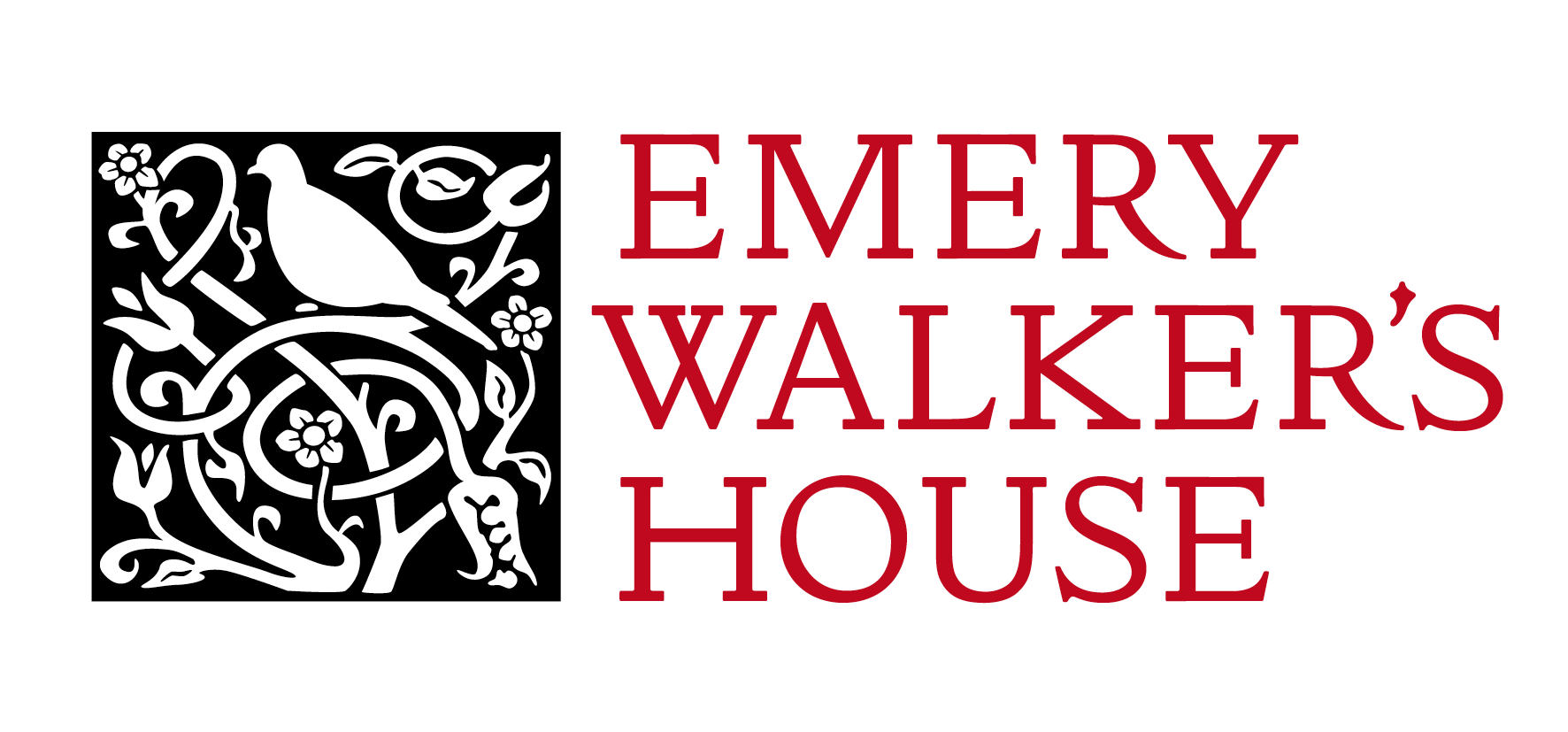Hello!
I’m Sally Roberson; I’m an embroiderer & this is my first textile blog for the Arts & Crafts Hammersmith website. Ever since I was young I’ve got more & more interested in (or obsessed by, if you listen to my friends) the designs of William Morris and his friends, starting from when I was a penniless student in the 1960s and found myself, one wet Monday morning in Manchester, with several hours to kill while I waited for a train. The City Art Gallery was the obvious choice; it’s there that I first came across the work of the Pre-Raphaelite painters, which led in turn to William Morris, which led to the whole Arts & Crafts scene.
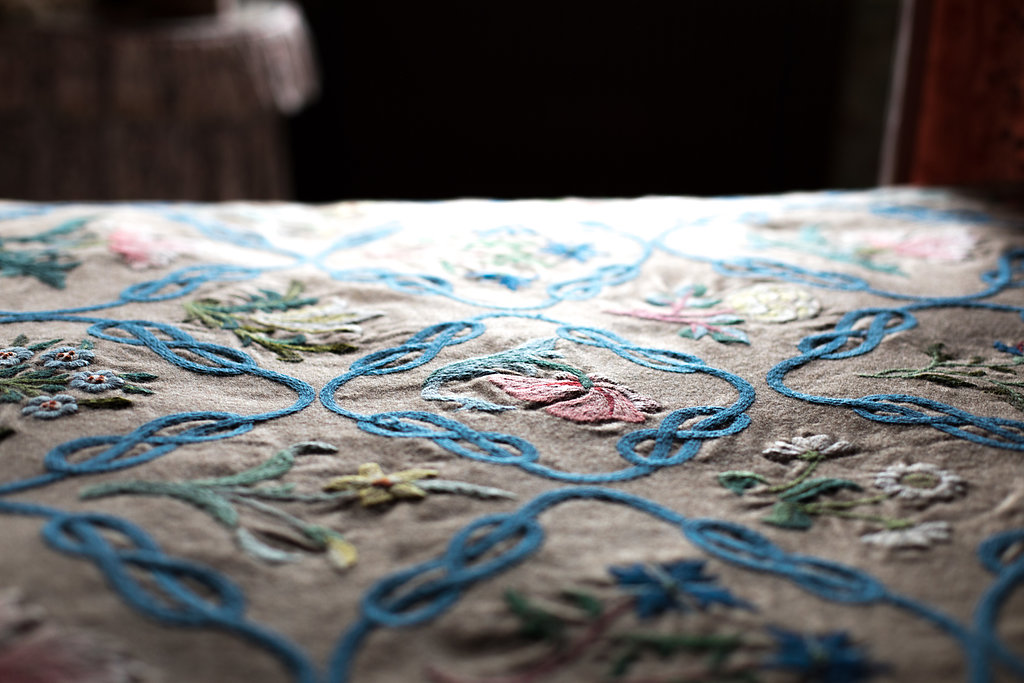
The embroidery interest goes back even further, to my early childhood, when my mother taught me some basic embroidery stitches, then left me to do whatever I wanted with them. Rolling forward many years, after I retired, I decided that it would be great to learn to stitch properly, and signed up to do a Certificate in Hand Embroidery at the wonderful Royal School of Needlework at Hampton Court, where it’s been a very rewarding, but extremely challenging, experience.
Having volunteered for more than ten years at a couple of Arts & Crafts houses belonging to the National Trust, where I’m a tour guide and give embroidery demonstrations, it was no great surprise to be approached to be asked to help catalogue the textiles (and wallpapers) from Emery Walker’s House while they were in store during the house renovation. There I’ve been able to study hundreds of textiles, including a great number designed by William Morris and several pieces of work by May Morris, including the impressive bedcover she made for Emery Walker’s wife, Mary Grace.
William Morris’s wife, Janey, was a gifted embroider, and so was her sister, Bessie and they trained a number of other women to stitch for Morris’s fledgling firm from the 1860s. Later on, they also taught Janey & William’s two daughters, Jenny and May, the same skills they used to revitalise the dying art of hand embroidery, the same Art Needlework which was taught by the Royal School of Art Needlework, set up in 1872.
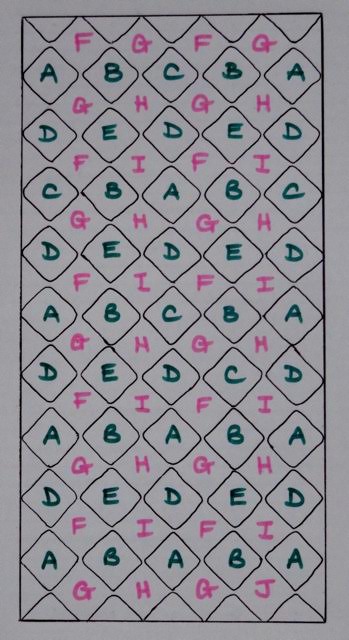
The design for the bedcover is something called ‘millefleur’, meaning literally ‘a thousand flowers’ and is covered all over with spring and summer flowers inspired by the meadows near the Morrises’ home at Kelmscott Manor in Oxfordshire.

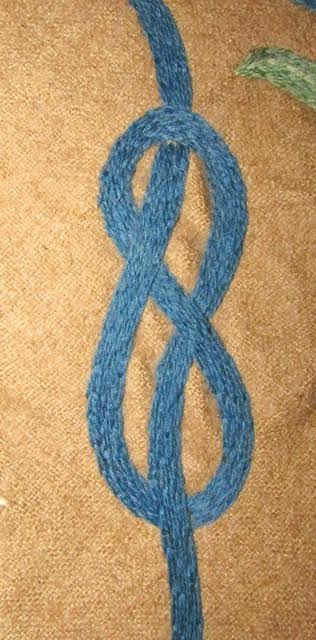
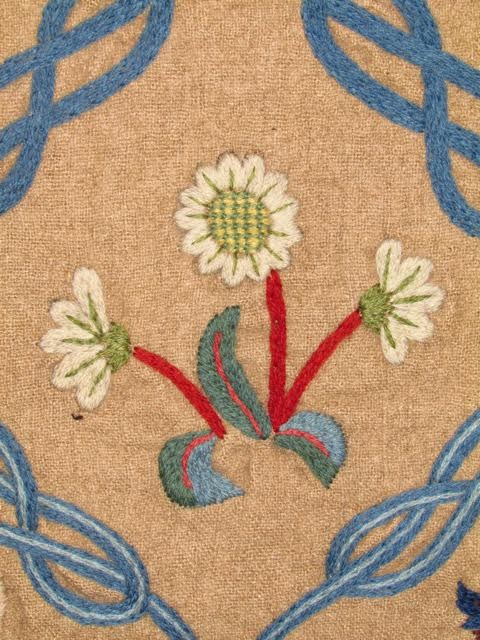
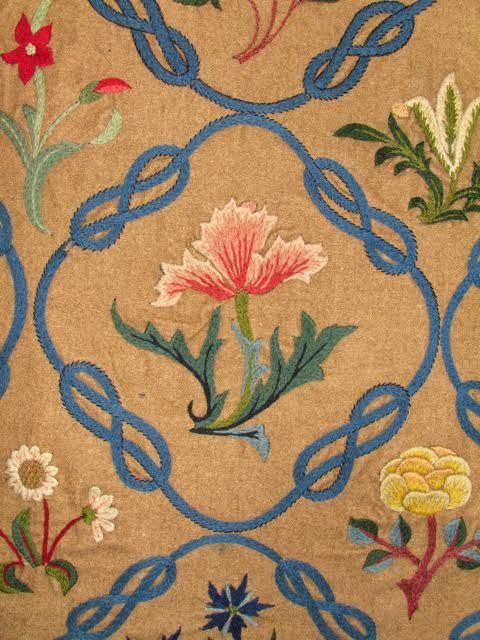
The ten different kinds are arranged in alternating rows of four or five flowers, with no two flowers the same next to each other. Just over half of them are inside embroidered blue frames, worked with an Elizabethan lovers’ knot on each side; the rest lie in between the frames.
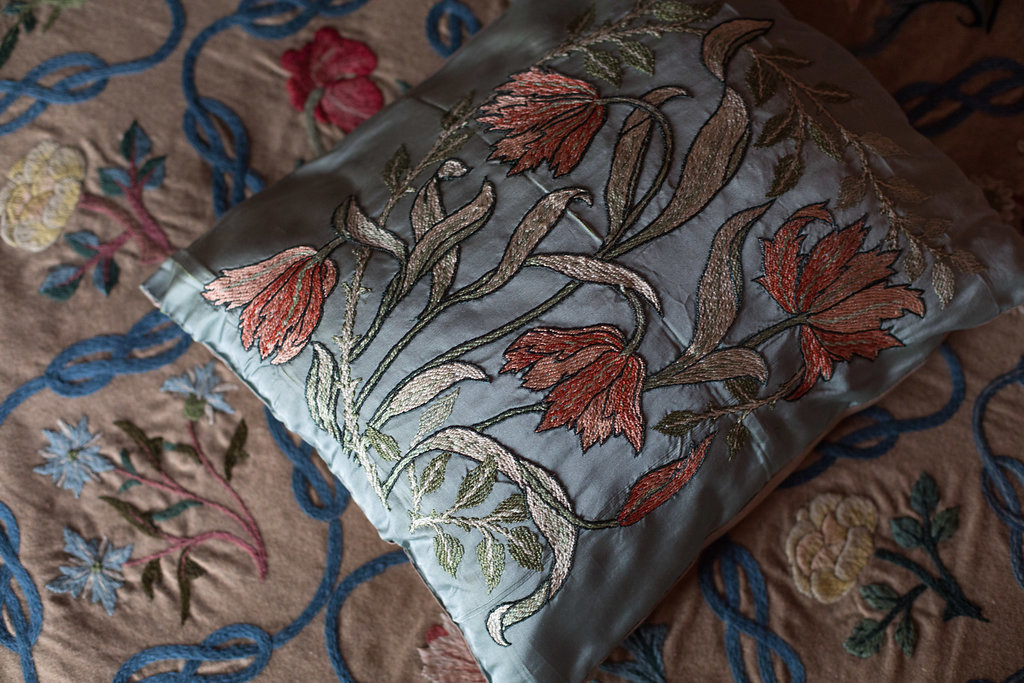
Since the embroidery is worked in wool thread on felted wool fabric, it presents all kinds of difficulties for an embroiderer, which I’ll tell you about next time.
Look out for Sally’s next exciting episode! And if this has whetted your appetite to see first hand and find out more about May’s beautiful embroidery, book on one of Sally’s embroidery workshops at The William Morris Society. You can see some of May’s designs at Emery Walker’s House (booking will open in January for 2018 tours) and The William Morris Society Museum, which is open and free to the public on Thursday and Saturday afternoons between 2 and 5pm.


